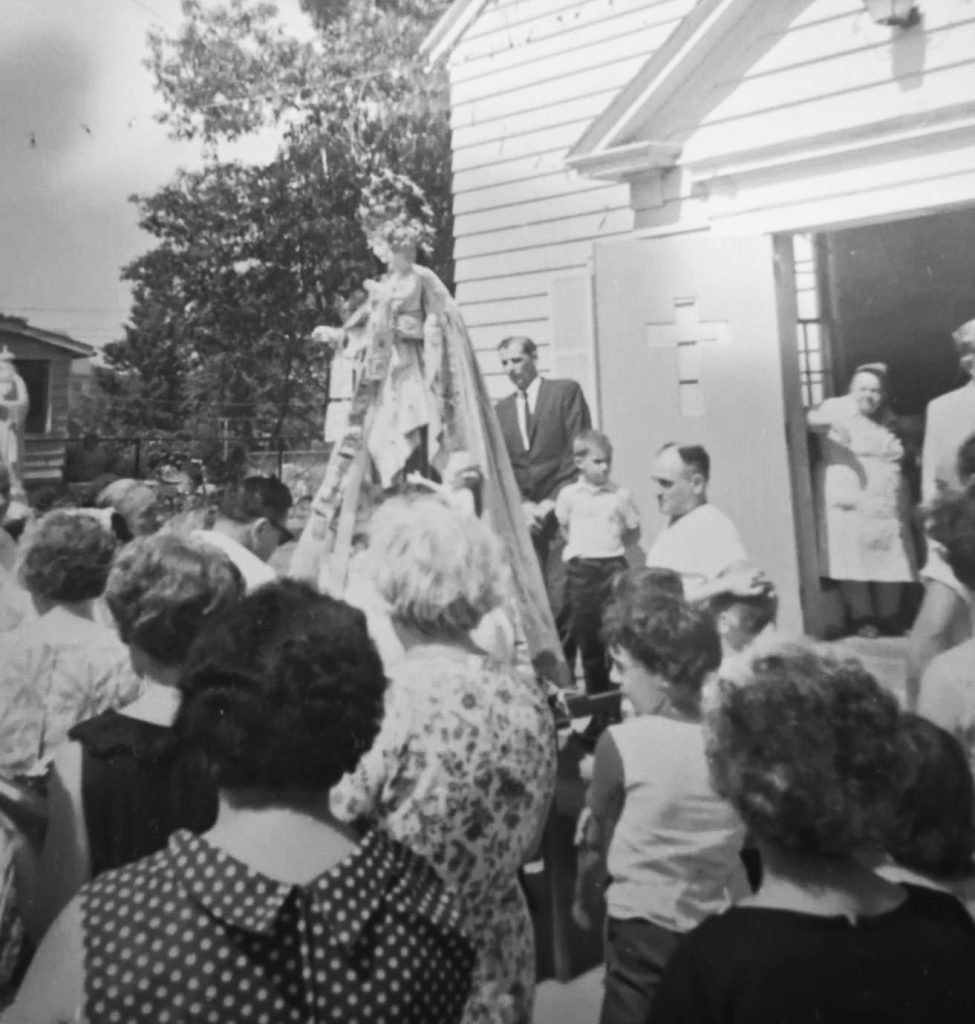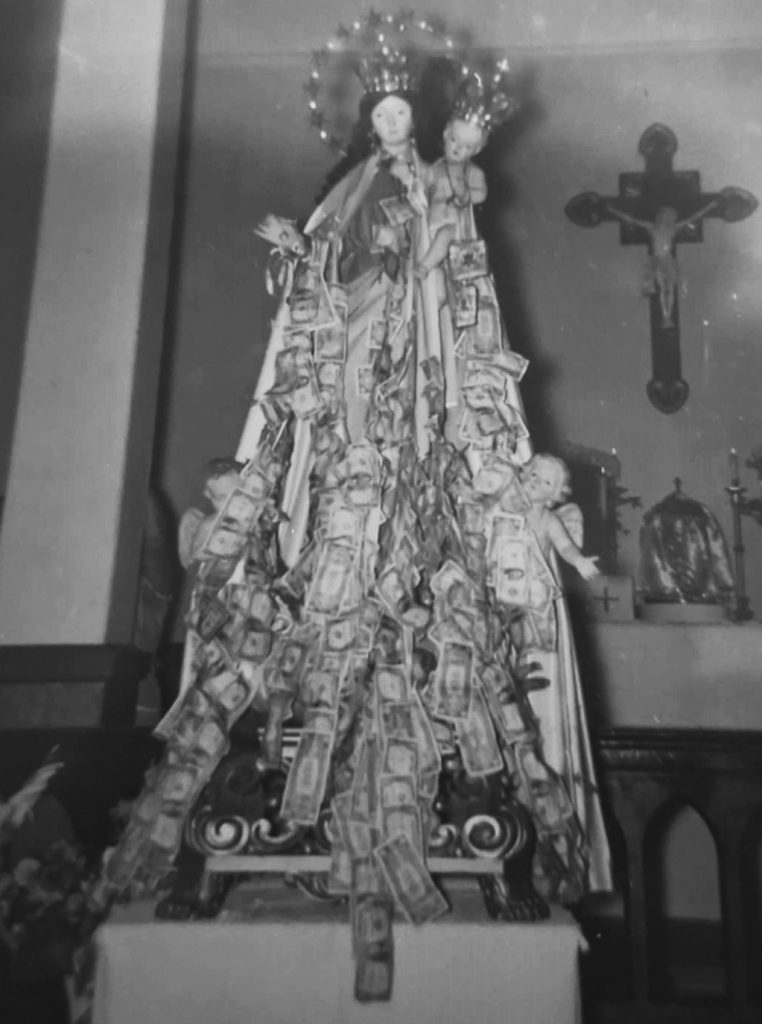By Dan Shine
Voice Columnist


Our Lady of Mt. Carmel Society
In 1945, the officers of a new local organization, Our Lady of Mount Carmel Society, Inc. bought from Mr. J.W. Wilbur, on behalf of St. Paul’s Church, a plot of land and a structure at 85 Fenwick Street in Allingtown. Those officers were: Bonaventure Bonito, President; John Franco, Treasurer; Vincenzo Marchitto, Secretary.
The existing structure was converted into a chapel, pews were added, and a statue of Our Lady of Mount Carmel was received directly from Carrara, Italy, renowned home of marble quarries and skilled stone carvers. Regular worship commenced at the Allingtown location.
Observance of the festival of Our Lady of Mount Carmel was brought to America by Italian immigrants who took time to celebrate their safe journey to America by giving praise and thanks to the blessed Virgin Mary. The most important function of the Our Lady of Mt. Carmel Society was the preparation and presentation of the feast of Our Lady of Mount Carmel each July 16th.
The story of the feast is part of the Order of Carmelites history. It occurred in 1251 with St. Simon Stock, an English Carmelite who became the order’s superior. Simon had joined the order after a pilgrimage to the Holy Land, bringing his zeal for prayer to his leadership role. Tradition holds that on July 16, 1251, while praying for the order’s struggling members, he experienced a vision of the Virgin Mary. In this apparition, Mary appeared with the infant Jesus, surrounded by angels, and presented Simon with the brown scapular, necklace of cloth with images on the front and back sides. She promised that those who died wearing it piously would not suffer eternal damnation.
This event, though not universally documented in contemporary sources, became a cornerstone of Carmelite spirituality. The scapular, a simple garment of two cloth pieces, symbolizes Mary’s protection and the wearer’s commitment to Christian life. Catholic teaching supports such sacramentals as aids to holiness (CCC 1667-1679). The apparition’s authenticity relies on oral tradition and later Carmelite writings, solidifying its place in devotion. St. Simon Stock’s leadership and this vision significantly shaped the order’s future.
The feast became a popular devotion throughout several sections of southern Italy, and was brought to this country with regional immigrants.
The festival is an example of the Italian festa, one of the many wonderful traditions that Italian forebears brought with them from the old country. Anyone who grew up in an Italian-American neighborhood, would likely recall the festa, or festival.
Here in West Haven, and for decades, every summer a parade of the faithful bearing the statue would begin at the chapel and process along the streets of Allingtown, stopping here and there where a table was provided for setting the statue. Along the way, worshipers would attach paper money to the statue, which was adorned with ribbons. Following the parade, the celebration returned to the chapel grounds, where the streets were hung with white lights. For those celebrating, there were carnival booths and rides and a stage where singers sang Italian songs with a live band. The celebrations went on and on, into the night.
This tradition continued for decades and finally was discontinued in the early 1980s. The chapel was closed, and the land was sold; St. Paul’s church was also closed in a recent reorganization of Roman Catholic facilities. The statue was moved to St. Louis Church, where it remains to this day.
The warm and magical memories of those times, the fellowship, and the pleasure of the event continue to live on in the memory of those who looked forward to and celebrated that day.
We wish to thank Justina Marchitto, Donald Marchitto, Valerie Forte, Rich Papa and Phyllis Franco for their contribution to this story.
That was great Jackie, where did you get this information, that is part of our personal history. Excellent